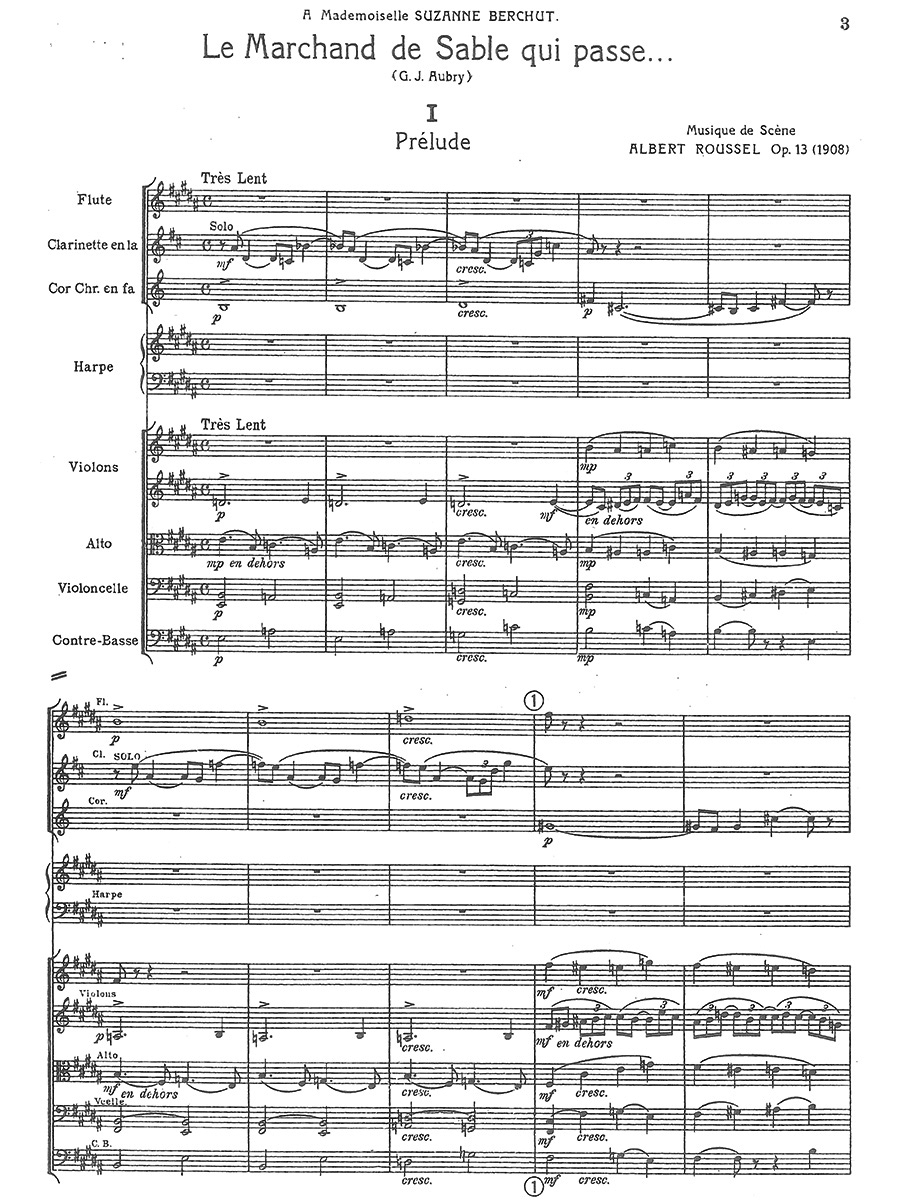Le Marchand de Sable qui passe Op. 13, Incidental Music
Roussel, Albert
16,00 €
Albert Roussel
Le Marchand de Sable qui passe – musique de scène, op. 13 (1908)
(b. Tourcoing, 5 April 1869 – d. Royan, 23 August 1937)
Preface
Born in Tourcoing on 5 April 1869, Albert Roussel was one of the most influential figures in French music history. Having first pursued a naval career and embarked on the training ship Borda in 1887, he decided in 1894 to devote himself entirely to music. He took preparatory lessons from Eugène Gigout until 1898, when he enrolled at the newly founded Schola Cantorum in Paris to study with Vincent d’Indy. After finishing his studies in 1907 he became professor of counterpoint at the same institution, a position he held until 1914, allowing him to teach such famous composers as Erik Satie and Edgard Varèse. In 1908 he married a young Alsatian woman named Blanche Preisach, after which he undertook a long journey through India and Indochina. The impressions he gathered on this journey left a deep mark on him, influencing not only his style of composition but the musical design of his symphonic triptych Évocations (1910–11) and the opera-ballet Padmâvatî (1914–18). During the First World War, Roussel served briefly with the Red Cross before becoming a transport officer in 1915. He health constantly deteriorated, and left the service in January 1918. His efforts to create “music determined to free itself from any suggestion of the picturesque, completely non-descriptive and unassociated with any particular locality in space,” led to the creation of his Second Symphony (1919-21). However, the work made little impression on the public at its première in 1922, and Roussel turned increasingly to a lighter and more lucid neo-classicist style in the years that followed. In 1929 his sixtieth birthday was celebrated with a large-scale festival that illustrated his significance to France’s contemporary music. His final years were marked by a steady decline in his health. He died in Royan of heart failure on 23 August 1937, the same year as Maurice Ravel, Louis Vierne, Gabriel Pierné, and George Gershwin.
Le Marchand de Sable qui passe (“The Sandman”) is a one-act symbolist drama of 1902 by Georges Jean-Aubry (1882–1950). A man and a woman, not realizing that they are preordained for each other, are brought together by the mysterious Sandman, who ultimately vanishes into the depths of the forest. Roussel composed incidental music for this play in 1908, using a reduced orchestra of flute, clarinet, horn, harp, and strings. According to an inscription on the final page of the manuscript, the piece was completed in Sainte-Colombe on 23 October 1908.
The opening of the first movement (Prélude) evokes a peaceful, dream-like atmosphere by employing circular repetitive motifs in the clarinet and strings. Once the impassioned main motif is stated by the clarinet and cello in bar 14 (with a chromaticism reminiscent of Wagner’s Tristan), the more agile middle section begins in bar 23 (Assez Animé). Here the dotted rhythm of the strings (avec rudesse) acquires special importance in conjunction with the even triplets in the harp. Finally, the return of the main motif in bar 43 (flute) marks the beginning of the concluding section, which returns to the dream-like chromatic chords of the opening.
Read full preface / Komplettes Vorwort lesen > HERE
| Score No. | 1766 |
|---|---|
| Edition | Repertoire Explorer |
| Genre | Orchestra |
| Size | 210 x 297 mm |
| Printing | Reprint |
